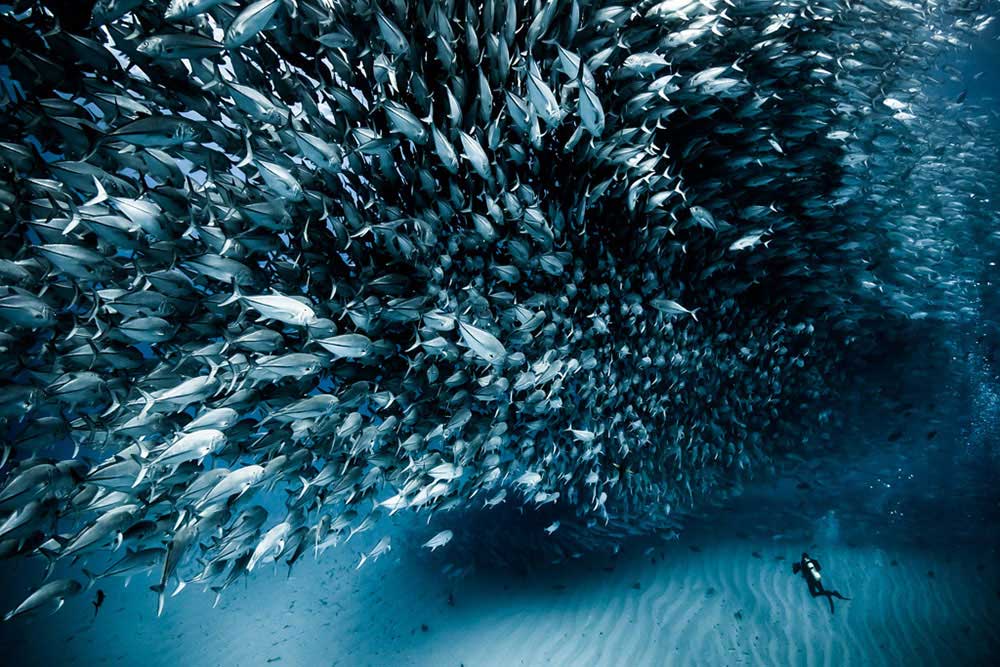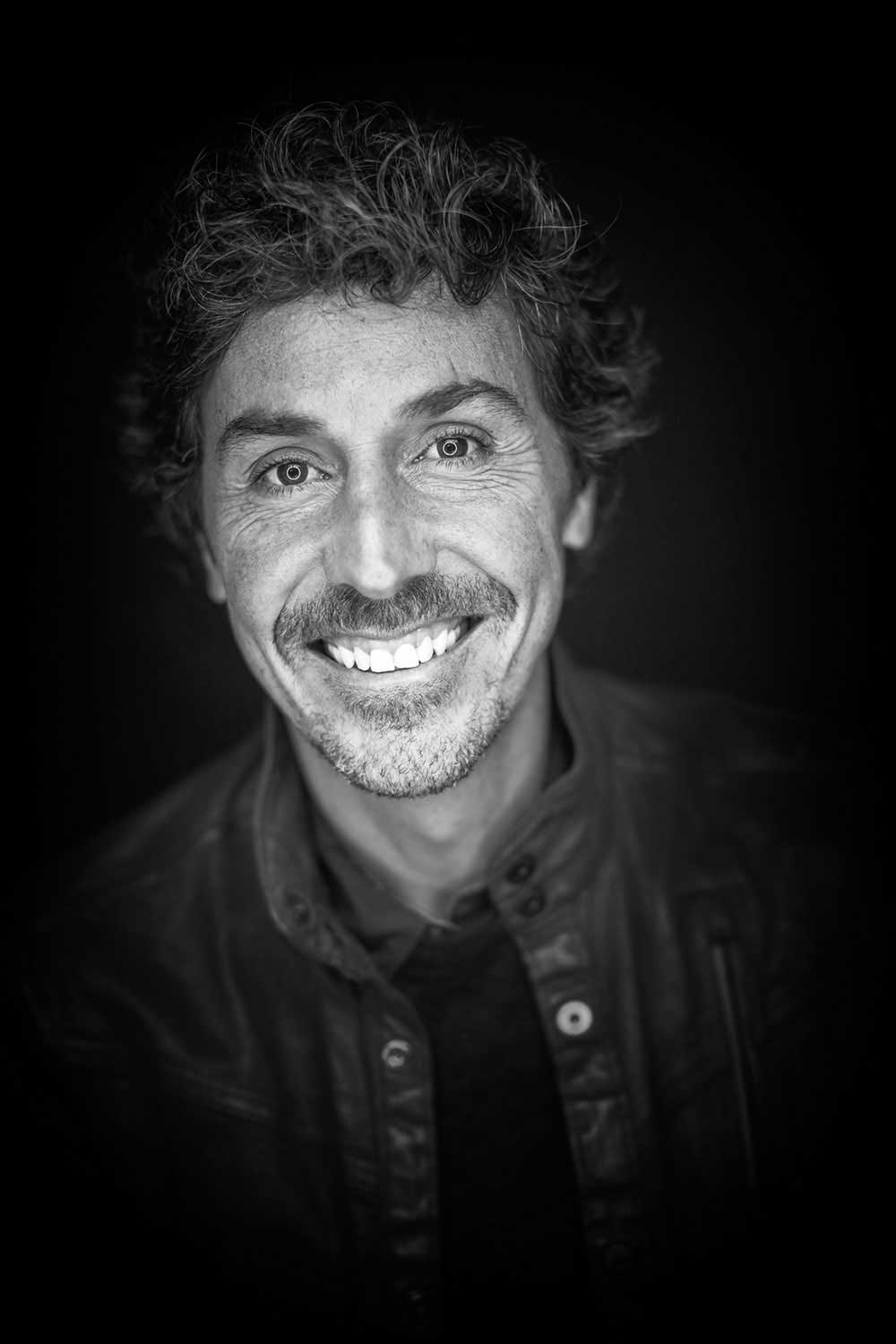Christian Vizl was born in México City and has been a photographer for over three decades. He has won dozens of international photography awards including Wildlife Photographer of the Year, International Photographer of the Year, Sony World Photography Awards and World Photographic Cup.
He has served as judge in several international underwater photography contests and his images have been published in numerous outlets including National Geographic and Ocean Geographic.[Official Website]
Can you tell us a little about yourself?
“Every since I was a kid, as far back as I can remember, I was attracted to the sea. I dreamt about what lay beneath the waves, and how would it look if suddenly all the water vanished, leaving in stasis all the animals and living creatures. In this way, I could walk inside the ocean and see them all, suspended for a moment in time and space.
I have devoted my life to exploring and contemplate the amazing beauty of the ocean and it has been an incredible journey that has brought me a deep feeling of connection with nature, but sadly during my lifetime I have witness the ever-increasing devastation that we humans are creating in this planet. Today the world’s Ocean is in grave danger. Overfishing, pollution, plastics, radiation, climate change, acidification and other human pressures threaten the fundamental nature of the ocean and it´s animals are being pushed to near extinction. The time to act and reverse our negative impact is now, before it´s too late risking loosing everything.
The majority of humans see marine animals merely as tons of food, but I see them as so much more than that. They don´t have a voice that we can understand, so the higher purpose of my images is to be a voice of the ocean and for the ocean, hoping that people can get a glimpse of who they really are, beautiful sentient individuals, with feelings and different personalities, with complex behaviors and interesting lives that science is only starting to understand
How did you get interested in photography?
I have loved photography since I was a teenager and was very inspired by photographers like David Doubilet, Ernie Brooks, Ansel Adams, Cartier-Bresson, etc. I believe Photography is capable of real service to humanity, promoting empathy and initiating change, so my main purpose as a photographer is to create poetic images showing the incredible beauty of these animals knowing they carry the power of changing our perception and spark the love and empathy that we all have inside. If we want to have a future in this planet, we need to understand that our lives are interconnected to all living animals, and our own well being is directly linked to the well being of these animals. As Dr. Sylvia Earl stated, “No blue no green, if the oceans die, we die”
Can you explain us the idea or the story behind this image?
Mexico, Baja California, Sea of Cortez. I heard stories about the thousand of jacks swimming together at Cabo Pulmo, but nothing could have prepared me for actually entering the water and find this spectacular sight. I was really amazed! and for a time, I just float there and enjoyed them. So in this time a diver in my group was already at the bottom, some 60 feet below. I usually don’t put divers in my photos, but in this case I thought it would be important for scale, since he looked so tiny in front of this immense wall of fishes! So I took the shot…
What, in your opinion, is most important to consider while shooting aquatic pho- tographs?
Definitely to be completely respectful of all the animals and ecosystems, no image is worth if taken while harassing an animal or destroying their environment. We must keep in mind that we are entering their home and we are only temporary guests.
What has been the hardest part of this image?
Knowing that all the life that you see in it is at a very serious risk of disappearing forever due to human unconsciousness and greed and that if we continue on this path I will witness this devastation in my lifetime.

How would you define your general style photography?
A strong and very high contrast black and white style, capturing a range of undersea scenes and moods -from the ferocity of sharks to the playful dance of dolphins- I aim to turn aquatic creatures and marine seascapes into visions of sublime grace and beauty suspended in time and space.
Could you please tell us anything about your technique and creating process?
I love shooting with natural light and all the dramatic effects it can create. As a rule of thumbs, I always look for angles that will create the most contrast separating my main subject from the rest of the elements in the scene; the lighting creates the highlights, shadows, and all the tonal range in-between. Tip: if you want the blue in you background to be black, then you have to expose for a very dark blue, that when turn into black and white, will result in a very dark grey and then you can lower the light only for that tone thus creating a completely black background or vice versa if your aiming for a very light background.
How are you shooting from a technical standpoint?
I use a DSLR camera, inside an Aquatica Housing. Once in the water it all starts with your exposure value for the blue. It´s interesting that there is not one single “right” exposure for the blue underwater, so if your goal is to create a white background, it´s important to expose for a very light blue. When you translate this light blue into black and white in postproduction, it will result in a very light grey. Then I use lightroom for postproduction.
In your opinion, what makes a good aquatic photography
A key element is to create a consistent series of images, with a profound sense of uniqueness in style and strong enough so that the artist´s unique voice and message will echo deep into the viewers soul, mind and imagination.
What is the main advice you would give to someone who wants to get started in the aquatic photography world?
First to learn how to be a good diver and practice until achieving a great buoyancy control. As for the camera, to buy the best one your budget can allow, understanding that you can create amazing images with any camera, you don´t need to most expensive equipment to take inspiring images. To develop your camera technique until you fully understand it, but keeping in mind to especially develop your creativity, passion, understanding of the subjects you are photographing and a complete state of respect and love for them.
How much preparation do you put into taking photography?
I plan my shootings and my trips looking for a specific animal living in the wild in the best possible conditions as to water visibitity, availability to be close to the animal, interesting behaviours ocurring in a particular area, etc. and try not to have any fix ideas in my mind. To be honest my main goal is to be in the presence of this amazing animals that I photograph and have any kind of connection with them, images comes second. Once Im in the water with them and enjoying their presence then I start to look around searching for beauty especially in terms of lighting. Photography is all about light, and in my opinion, it is the single most important aspect when it comes to creating appealing, inspiring and touching images. Beyond technical issues, what´s most important is how I apply and manipulate the light that´s available in order to create pictures with dramatic effect, carrying depths of emotion and using contrast and tonalities as means to emphasize form and structure of the scenery. I focus on the emotional impact of the final shot that will connect on a deeper level with the people that observe these photographs. Just as a poet uses words to create poetry, a photographer uses light to create images. So when I’m underwater taking pictures, one of my goals is to create poetic images through the use of light.
What do you think makes a memorable image?
When beyond what the subject of that image is telling you, you are able to perceive what the photographer is trying to tell you and what he felt while taking that image.
How do you know you got the shot you wanted?
I usually don´t have a fix idea of what image I want, I try to stay open when I go to a new place to find beauty.
Your idea of the perfect composition?
One where I can find balance, rhythm, intensity, flow and beauty.
What are you working on at the moment?
I’m very busy with the launch and promotion of my new book “Silent Kingdom, a world beneath the waves” which presents a collection of my black and white underwater images published by Insight Editions. The introduction is by Dr. Sylvia Earle, and it has texts written by David Doubilet, Ernie Brooks and Michael AW and it´s available to preorder here.







